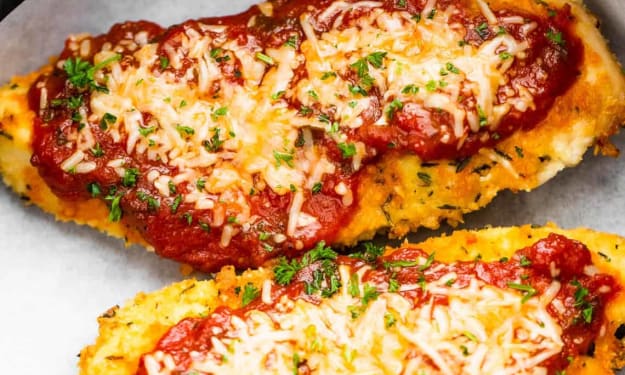
If cleanliness is next to godliness, then the four stove burners, open grill top, and two fryers are the steadfast and stalwart saints of my father’s kitchen heaven. He has run his own for the last 13 years and the robust 12 feet from counter to cutting board is both a line without room for embellishments and a studio that is still able to finesse them into the flavor of the food. My dad and my brother know every inch of their stations; their knuckles and hands singed hairless from years of respectful bows over transformative flames. Their steps and twists a delightful improvisation that seems more of one body than of two; arms angle to chop and slice; hands swirl and flavor; fingers pinch fine grains to add depth.
The view from the kitchen and our restaurant’s porch is the root of vacation envy. We’re just steps from the Atlantic and there’s nothing but miles of ocean ahead of you on a clear day. The wood and rope pilings of our porch get a refreshing mist of salt sprays as waves roll in across the street and break on the seawall. From the kitchen, we can see a lifetime’s worth of personalities in an afternoon, and we’ve learned that taste in what people eat is as varied as their taste in appearance. But similarities quickly start to peak up and hang around. Folks want fresh food and a consistently quality plate. Your mind can rest when what you’re snacking on came from the ocean across the street the night before.
And there may be nothing that says “apex predator” quite like feasting on something right outside its habitat. You wonder how close your plate may have been swimming to the shore you’re overlooking; if the lobsters crawled through the harbor behind you; if the boat moored a swim’s distance away brought in that evening’s catch. Being so close to the water lets you give fish a final respect that often isn’t afforded to other types of food. With each bite, each smell, each sound, you can see where it swam, fought currents, made a home in the sand, lived, breathed, and was made an offering. Its life is reimagined in full one last time.
Part of what makes eating seafood at the beach so motivating and mobilizing is the nearness of it. In New England, where fishing towns are all you’ll find along the coast of the cold Atlantic, eating freshly caught seafood is as much a part of your blood as the wave crests and riptides. Summers are synonymous with cherub-plump scallops, shrimp fried and nestled over a mattress of French fries, and tangy tartar sauce.
My mother is a firm believer that a person needs to get wet. This isn’t a “dive right in and get your feet wet” belief, but literally getting a good dunk and a thorough soaking in water, the ocean all the better. That momentary weightlessness of diving in can reorient and restart you. Fish is the only thing I’ve found that can transport you to that feeling. You experience the same cool relief as when you first jump in and your body temperature drops to meet the water around you; the unreplaceable sweet smell of brine surrounding your plate as it would if you were dug into the sand yourself. You close your eyes and can almost hear envious gulls, creaking ropes, and the whispering emptiness of the sea.
Our community is drawn to the water. It’s our jobs and our livelihood. It’s there to welcome us on a summer day and remind us of its strength in a winter storm. It remembers our town’s history in the faded boardwalk and splintered wood signs. For my family’s restaurant, it is the flavor of our life: a place where traditional cod is as celebrated and welcomed as buttery-smooth salmon or flaky routine-breakers like mahi-mahi and wahoo.
We eat our share of seafood throughout the year, particularly in the summer when the restaurant is open and something in the air just makes it seem like the right thing to do. Our menu is loaded with options for those inclined to take part in the time-honored tradition of the summer beach town. Though tradition is not without debate.
You can stop into four different restaurants and eat fish and chips four different ways. But we know ours is proper. Cod may be considered the star, but that role is almost certainly 1A and 1B. The fries need to be shoestring thin and cooked just to the point where you can nearly snap them in two. There should be a crunch, but it should be the most fleeting and elusive of crunches. It leaves with the same suddenness as it arrived, giving way to a surprising creaminess, and as you’re left wondering if it was ever there at all, that delicate and eliciting partner, salt, arrives and encourages you to try again.
What makes the dish is not the fish itself, though it must be fresh. And for shame if you say it’s the batter, for none should be used at all; to drag something so delicate, something so full of shimmering light through such sludge should make one’s soul as heavy as it makes the fish. What makes the dish is the flour: an airy, playful pillow sitting next to your station, like an impatient puppy eagerly and innocently waiting for your hands to pat it. Within is an anomalous amalgamation of warmth: yellows, reds, and browns nestled together to create a backdrop for various whites that compete with each other for brightness. The mixture is a heavenly cloud and coats the fish like a wetsuit protects and cradles a diver. It is not thick. It is not a shell but a second skin, with a flavor that playfully changes as it dances around your mouth and greets tooth, cheek, gums, and tongue.
I’ve easily worked my way through half the menu many times over. I’ve put the other half on an unapproachable pedestal much as a nervous middle-schooler does for his crush at a school dance. It’s there, temptingly close but out of reach. I’ve been allergic to shellfish for most of my life and what memories I have of the taste of lobster, crab, and steamer are fleeting but revered. I tread a fine line between breath-shortening dread that something illicit touched my own plate and itching for it to be close and see it eaten.
I’m left with their smell.
I’m voracious in my appetite for aroma. I live through my well-practiced waft, at times a conductor overlooking a rapt orchestra of shellfish: dainty sections of crustaceans blend into hard brass mollusks, with full-bodied softshell crabs and strong clams providing the boom of the percussion in the back. Uncooked, the brine welcomes you in an overture. Fruity scented oil drizzles in with a flick of the wrist. It swirls and overlaps its partner with Balanchine grace. My brother and father paint their shrimp and diver scallops on to the grill which instantly envelopes them in the smell of warm char. I can smell the heat that completes the metamorphosis of the feast: shrimp turn from ocean grey to white to seductive pink and then to a crescendo of pumpkin orange, scallops moving from the pale yellow of a rose to a pallet of sepia tones.
An applause of crackling frying oil congratulates oysters and clams on their way in for a baptismal dunking. The briny vinegar of their nature is forgotten in favor of a subtle sweetness.
The piece de odeur is simple and satisfying: mussels in a white wine and garlic sauce. This is a dish made with rustic inhibition over precision, yet the precise taste is, from what I’ve heard, unmatched. And it starts with a bang. PEI mussel shells are rapped on the counter to see how they respond. Those determined worthy of the dish are brought into the fold and welcomed into the assembly as they wait for their turn to be deployed.
The vanguard is made of steadfast oil and resolute garlic, a combination that quickly releases an almost bitter earthiness into the air. It sits for a moment and patiently gives you a break from the first movement. And then, after you’ve had time to catch your breath, a new whiff of garlic so inviting that Dracula himself would be tempted to a closer look. The most delightful sauté.
The mussels are offered without trepidation, followed by a dousing of a drier Chardonnay (though, any white will do) to add notes of citrus and subtle vanilla. The partnership adds a fruity sweet scent that converses with the garlic in a fiery battle. I revel in the revolutionary changes happening in the plate. There is a smash of sensations: an aromatic flame rises up from the edge as the pan peaks with a relevé. Bitter and floral exchange ripostes until the mussels, with a sigh, perform their final act and whisper open. In remembrance, a generous chunk of cool, smooth butter is sent in to coat the field. As it melts, it adds one last suggestion of dessert-like aromas, but these ones encourage you to have a new appetite rather than focus on the end.
For me, it is a dish of contradictions. I sense different scents that are both a triumph of variety and a personal lament for my lost friends, the bi-valves I valued as highly as any other. The snapping liquids sing an inviting dirge while my mind fights between longing to simply sit and smell more and relenting to the tiniest of tastes. A small spoon of broth surely wouldn’t send my body into shock, but even if so, what a sweet end it would be: a brief moment to finally share the notes in my nose with my patient mouth after all these years.
Folks like to encourage that I’ve probably outgrown my allergy. I suppose there is a chance I’ll get to enjoy a mélange of mussels again, that I’ll snack on shrimp, lunch on lobster, gorge on oysters, and appreciate every abalone I try. And if not? There’s a masterpiece in the air. You just have to smell it.






Comments
There are no comments for this story
Be the first to respond and start the conversation.